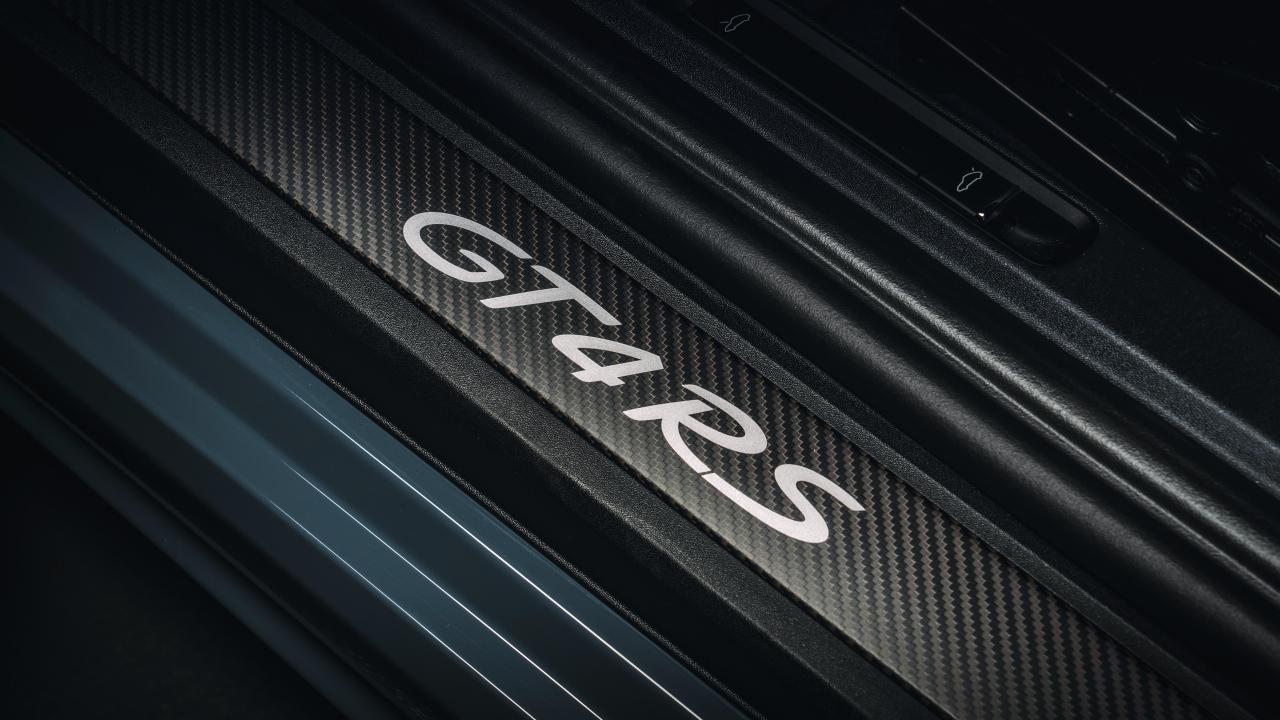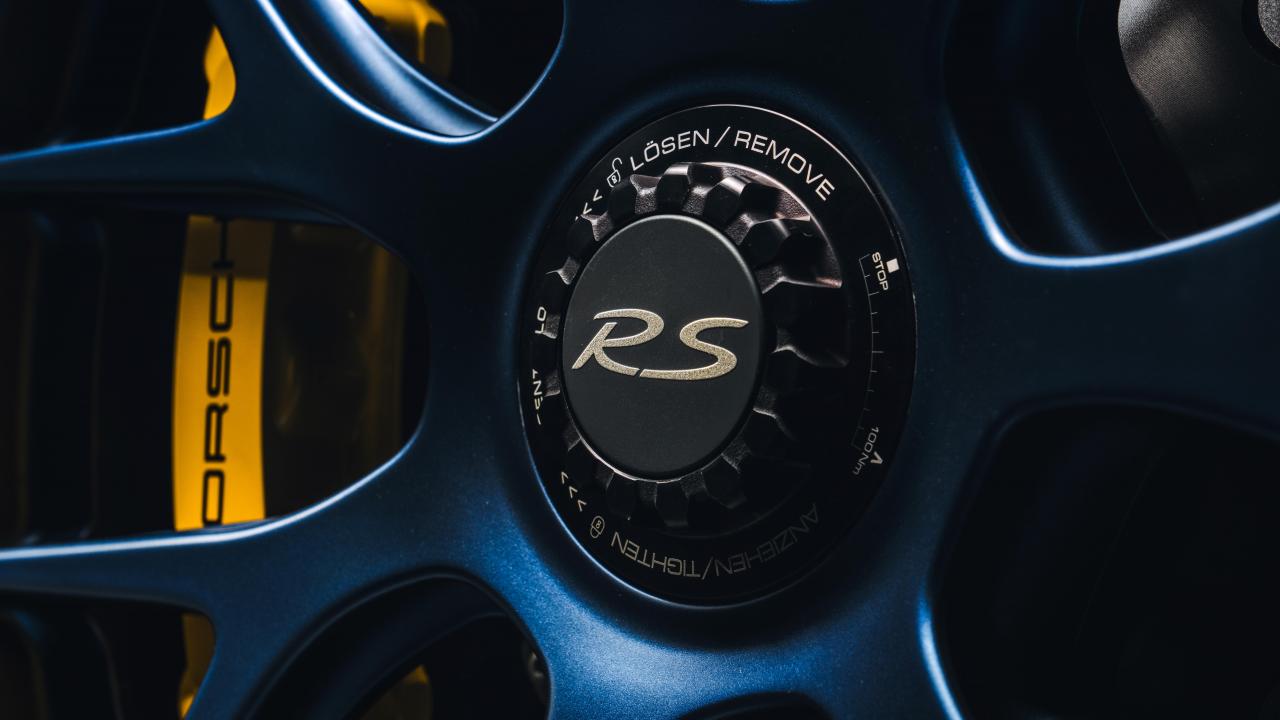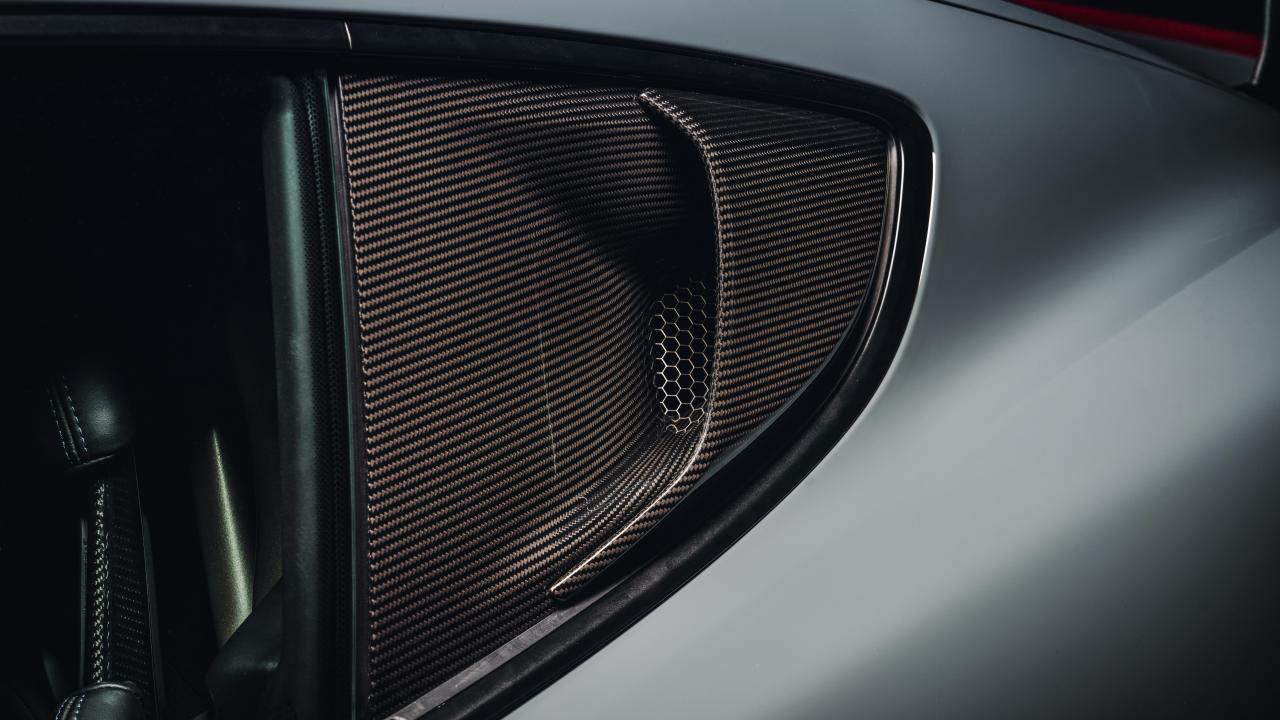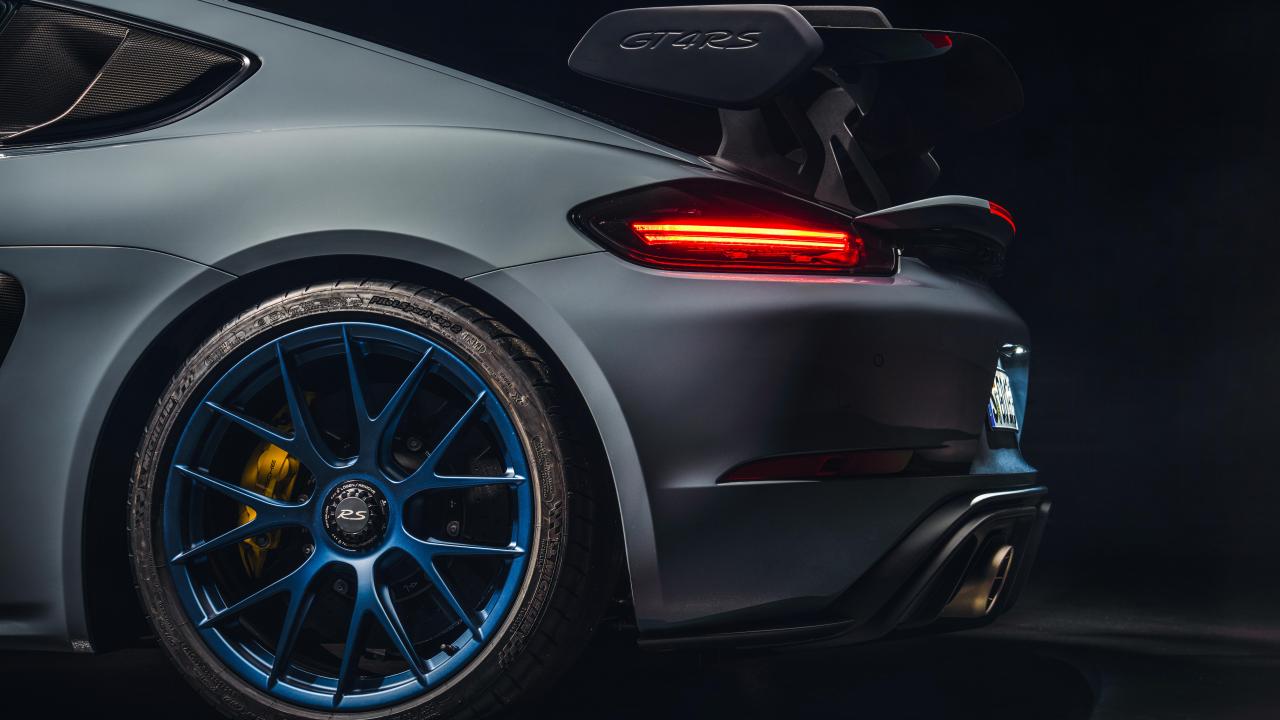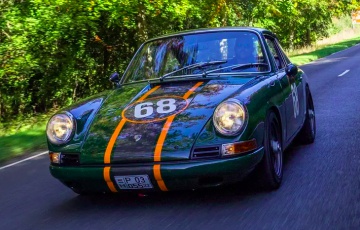Behold: the new 500hp Porsche 718 Cayman GT4 RS

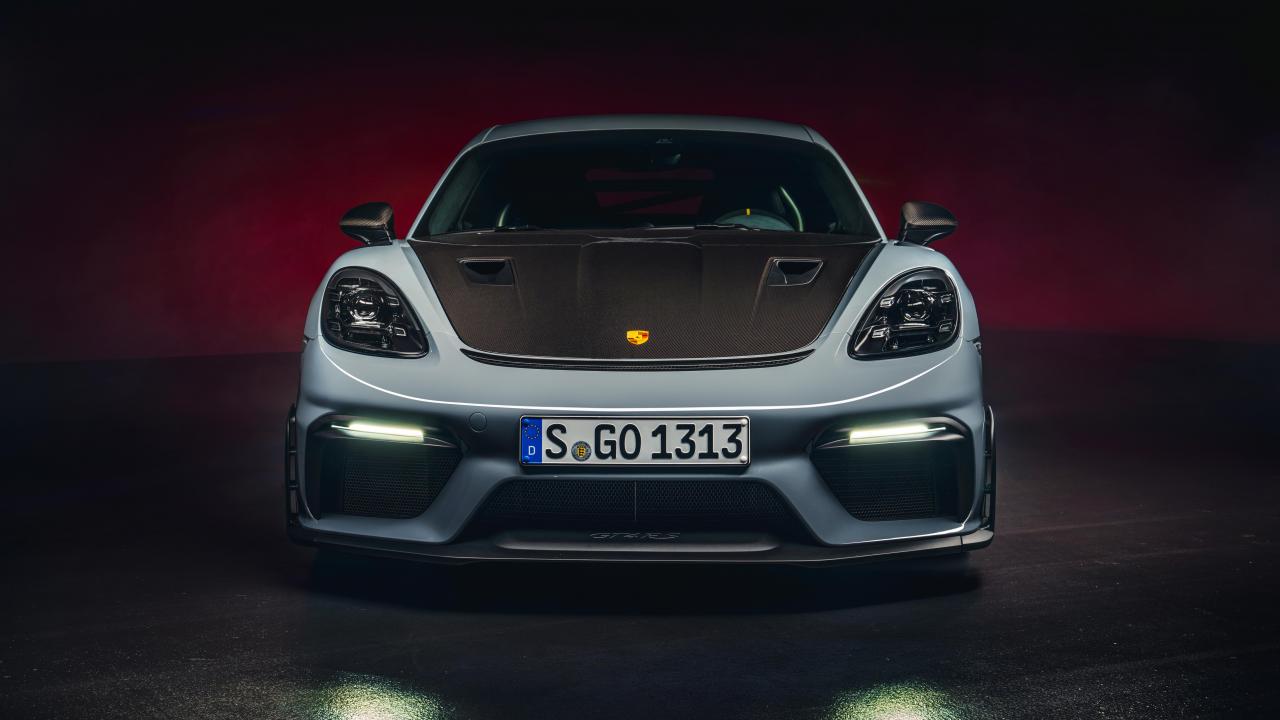

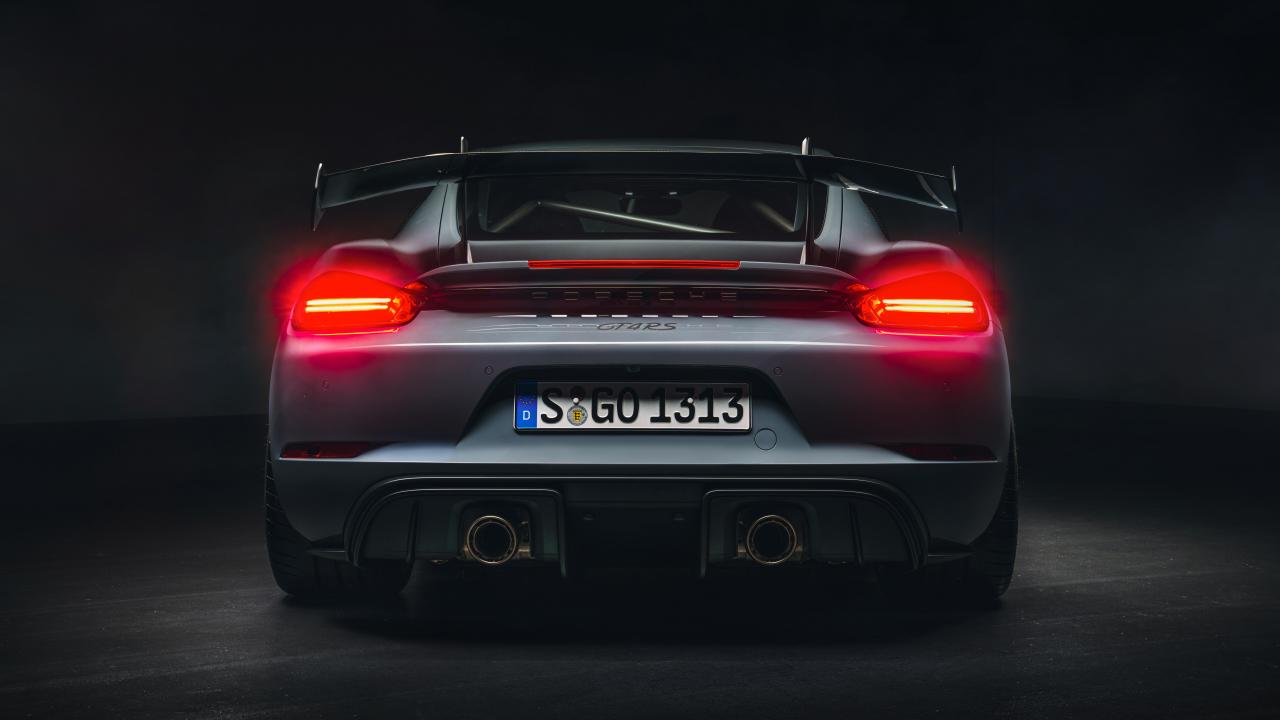

Ever wondered what would happen if you stuffed the stupendous 4.0-litre, naturally-aspirated, flat-six engine from the rear-engined 911 GT3, capable of revving to 9,000rpm, into the mid-engined Cayman?
Well, wonder no more, because Porsche’s GT department has let its hair down and built the car of our fever dreams. This is the new Cayman GT4 RS, and it might be the wildest RS model to date.
“The future of the mid-engined platform might have to do a lot with electricity. And so it's high time to have a big party on the 718 platform. This car is a live concert on four wheels, it's such an entertainer and it was such a fun project to make. It’s something that came from our heart and we’ve wanted to do it for a long time.” That’s Andreas Preuninger, the GT division boss and driving force behind the project.
That engine produces 500hp (80hp more than the standard GT4), while torque gets a slight bump to 450Nm and “like every modern RS” it’s PDK-only, no manual gearbox here. Gutted. Still, 0-100km/h takes a mere 3.4 seconds (a GT4 with PDK takes 3.9) and the top speed is 314km/h.
Perhaps more impressive is the Nürburgring lap time of 7mins 4.511sec, over 23 seconds quicker than the standard GT4, and just six seconds slower than a 911 GT3. That was done with pro driver Jorg Bergmeister at the wheel, and on a set of super sticky Michelin Pilot Sport Cup 2 Rs, which are available as an option.
Clearly you don’t make those sorts of gains by skipping leg day, so the GT4 RS has been through a strict weight-saving regime. Lighter, thinner glass for the rear screen, carbonfibre reinforced plastic for the bonnet and front wings, lightweight carpets, fabric door pulls, less insulation… it all adds up to a kerbweight of 1,415kg. That’s 35kg less than a PDK-equipped GT4 and 20kg less than a PDK GT3.
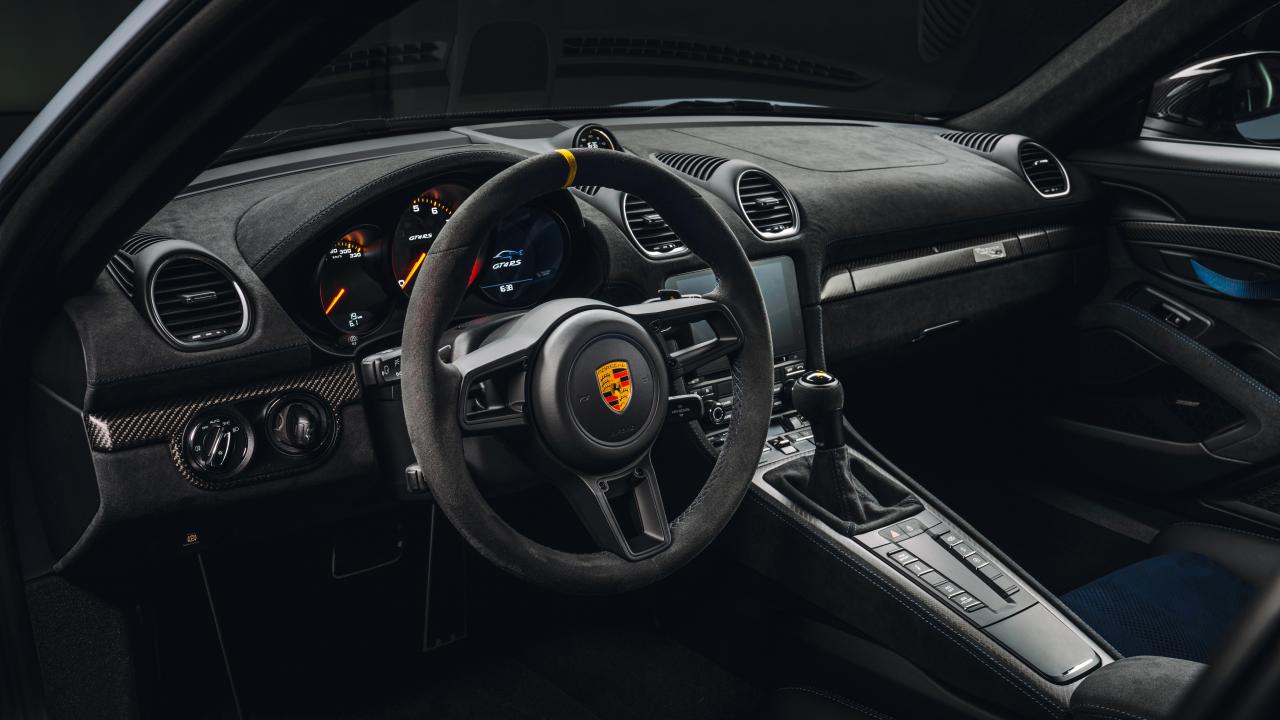
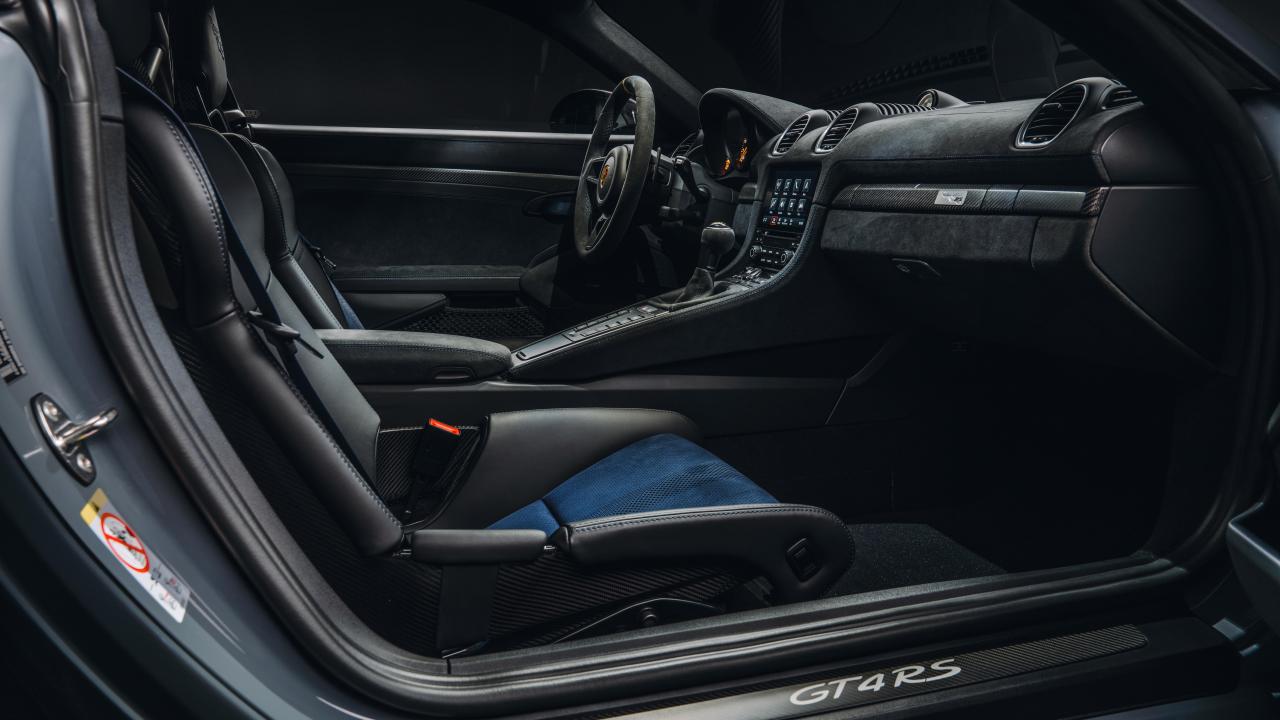
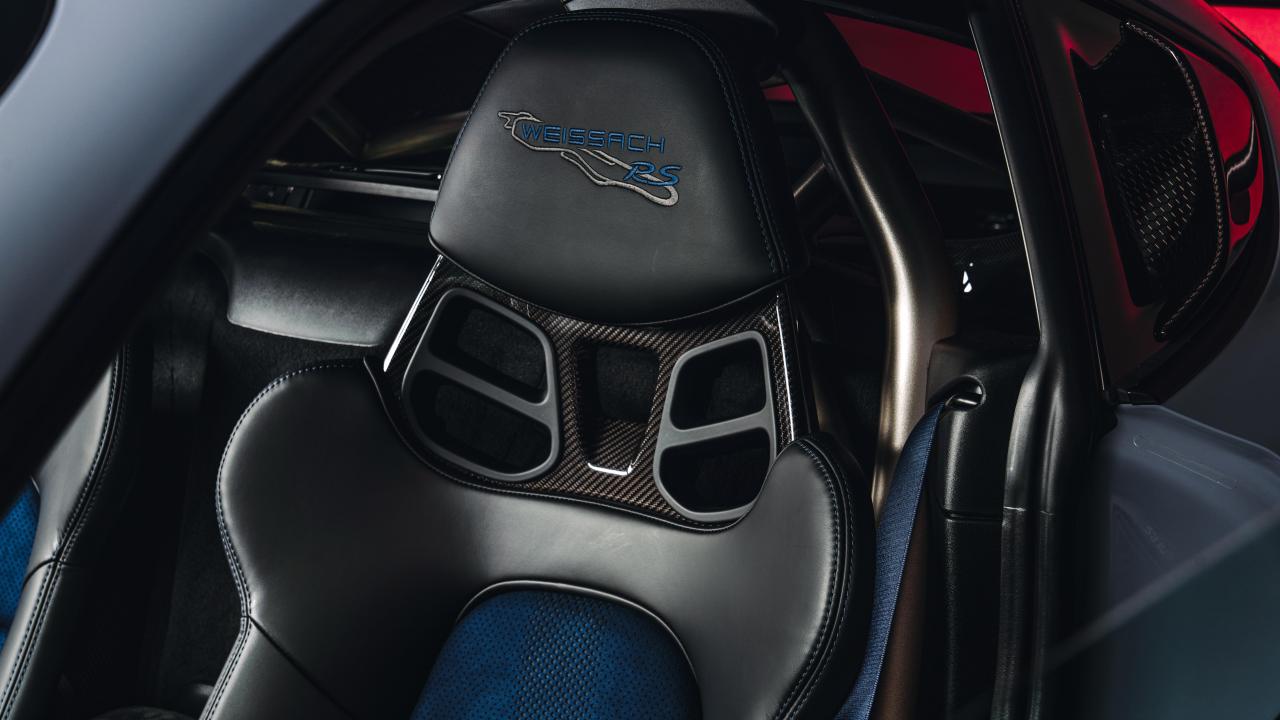
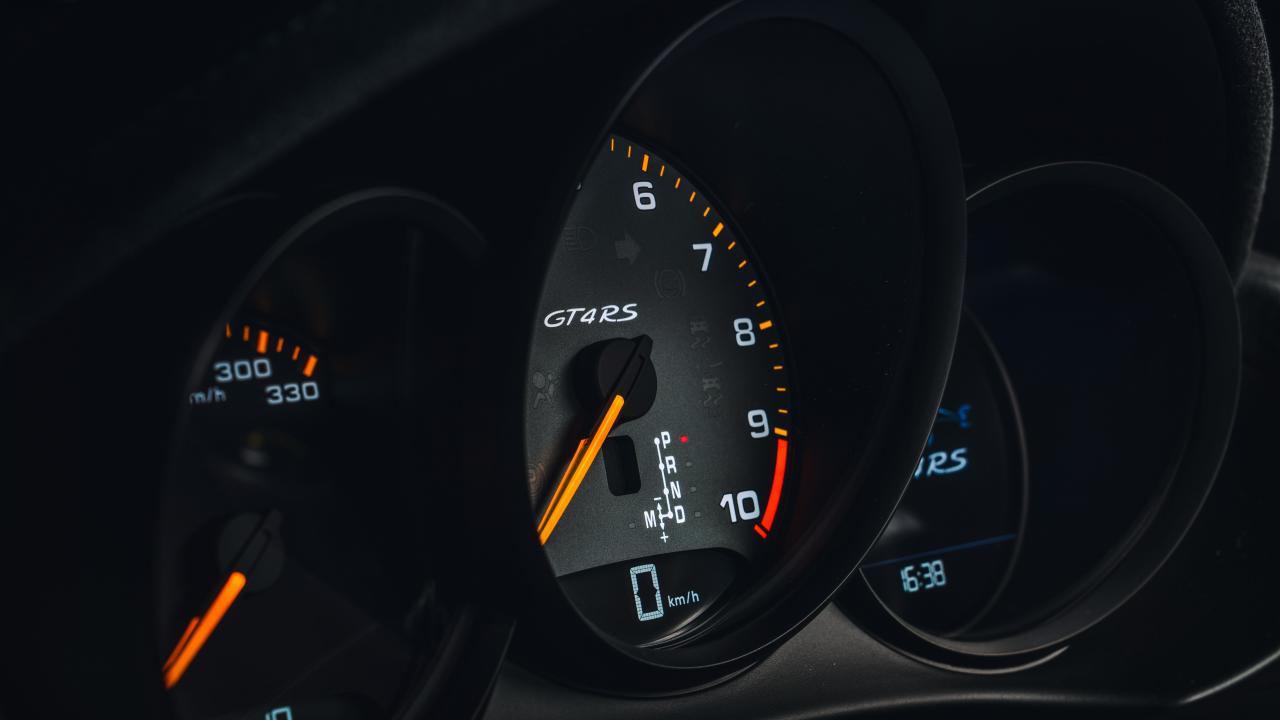
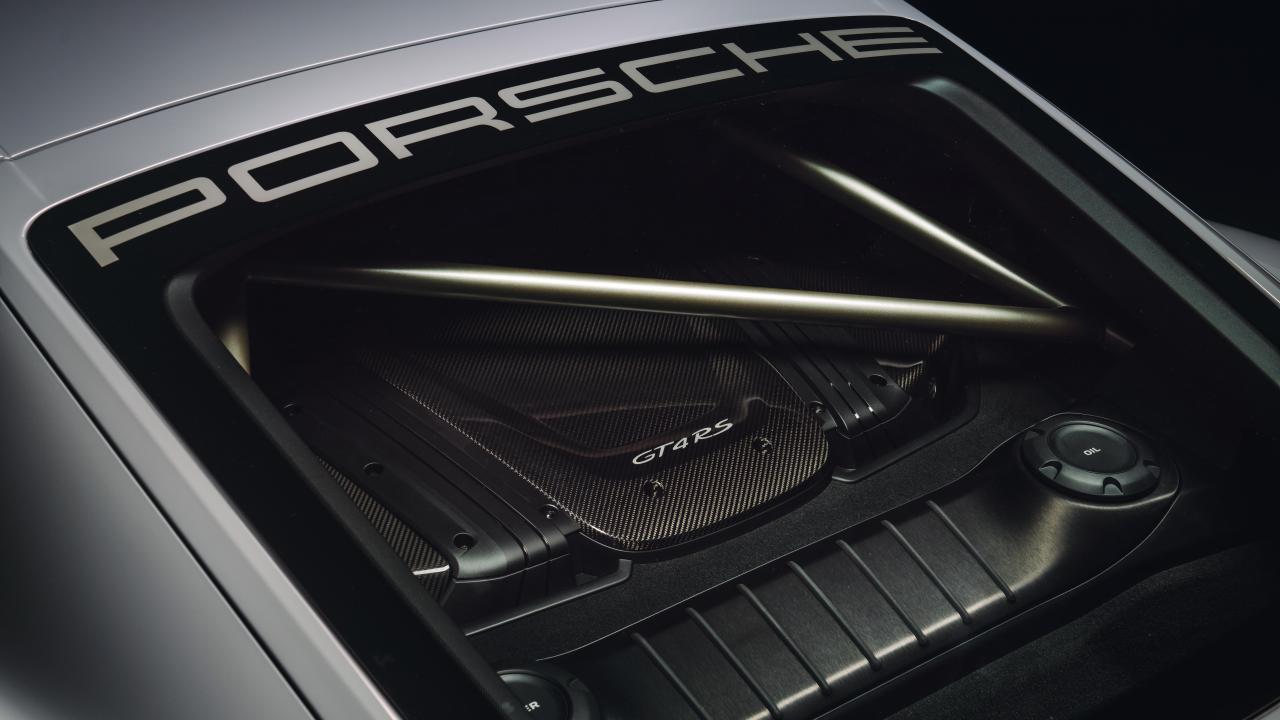
Manually tweak the huge swan-neck rear spoiler and the adjustable front diffuser into their most aggressive positions and there’s 25 per cent more downforce than you get in a GT4.
Vents in the top of the wheel arch, an extended front splitter and fettled underbody aero also contribute to keeping you stuck to the road. Then there’s RS-specific stiffer damper set up, and its own bespoke spring and anti-roll bar rates.
Porsche’s also used ball joints to keep the chassis tight to the body, making sure the car is as stiff as possible. Naca ducts in the bonnet feed air directly to the brakes.
In customary RS fashion, there’s an optional Weissach pack that’s largely cosmetic. Visual clues you ticked the Weissach box include logos on the headrests and exposed carbon weave on the bonnet (a body-matched stripe is available), induction air ducts, cooling air intakes, airbox cover, mirror trims and rear wing.
On top of that you get a titanium exhaust system with tips inspired by the retro-tastic 935, titanium roll cage and the opportunity of ordering 20-inch forged magnesium wheels over the standard 20-inch forged aluminium rims.
We suspect the only change you’ll care about though, should you get the chance to drive a GT4 RS, are the new induction air intakes where the rear quarter windows are usually found. These create “an emotive induction sound right next to the occupants' ears", which is Porsche for “will make the car sound utterly bananas on the inside".
Preuninger again: “The GT3 sound is dominated by the exhaust. This one's dominated by the intake, which gives a completely new atmosphere and makes the driving acoustics completely different.
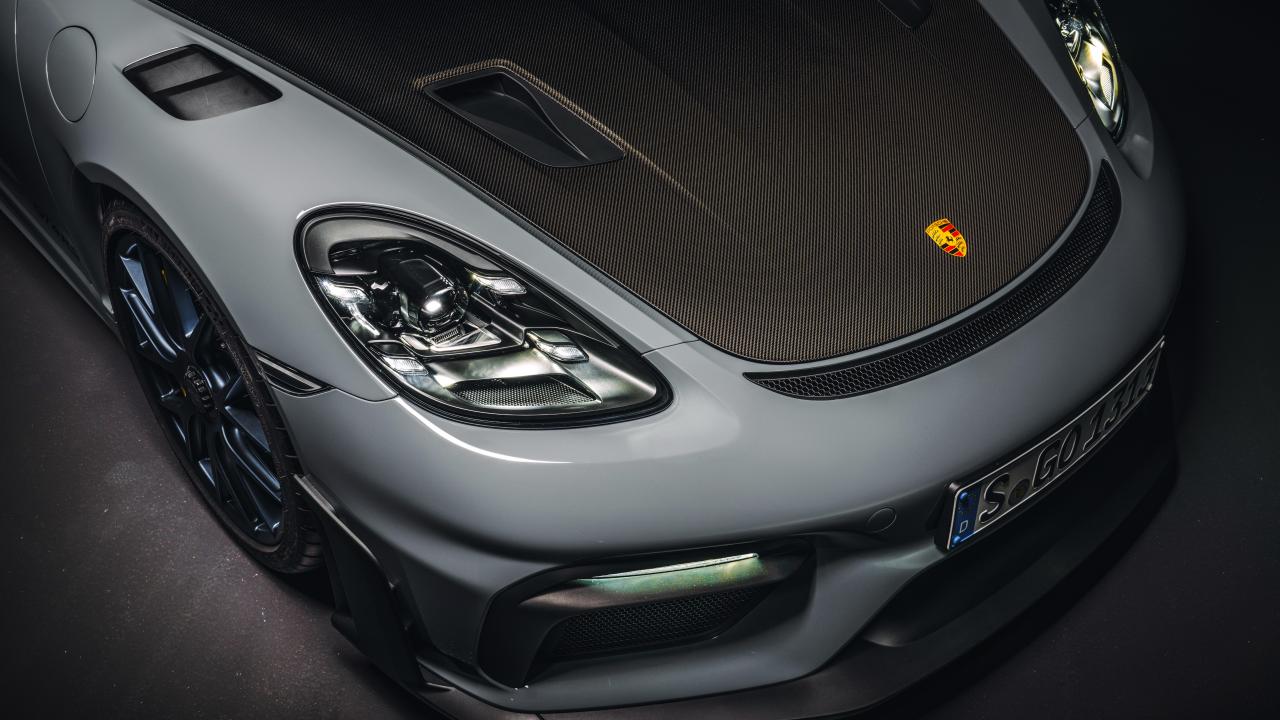
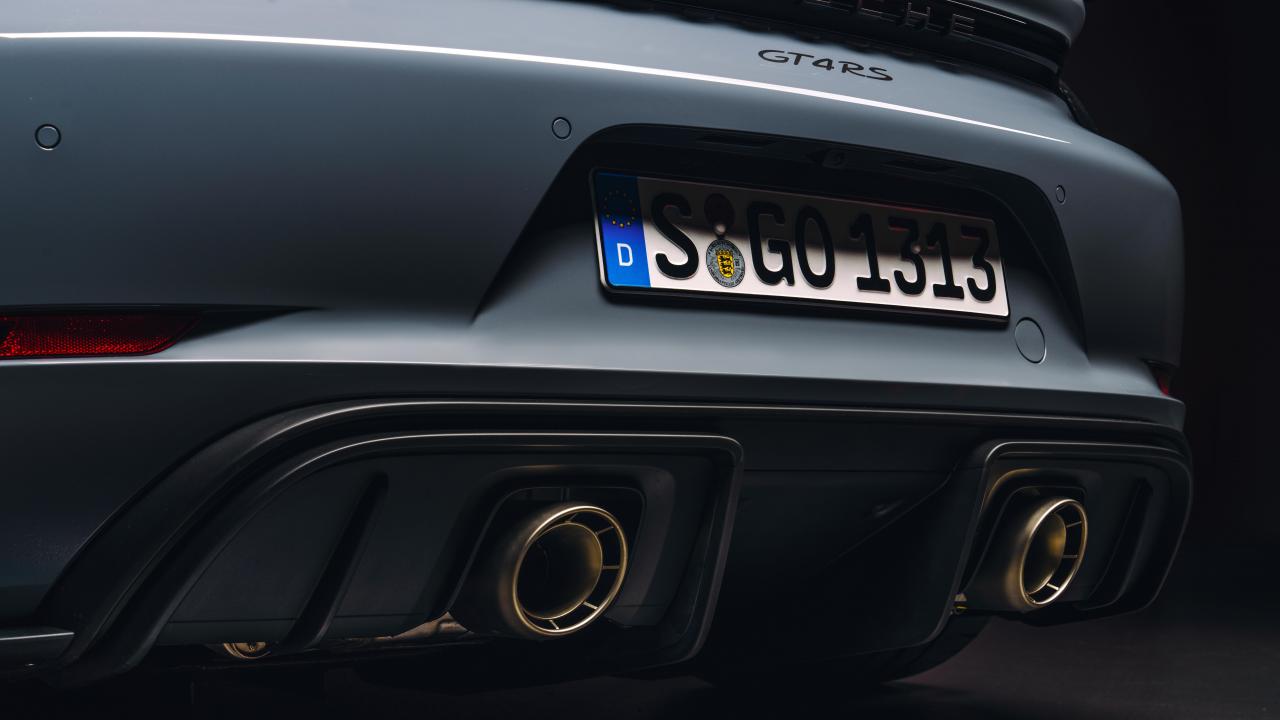
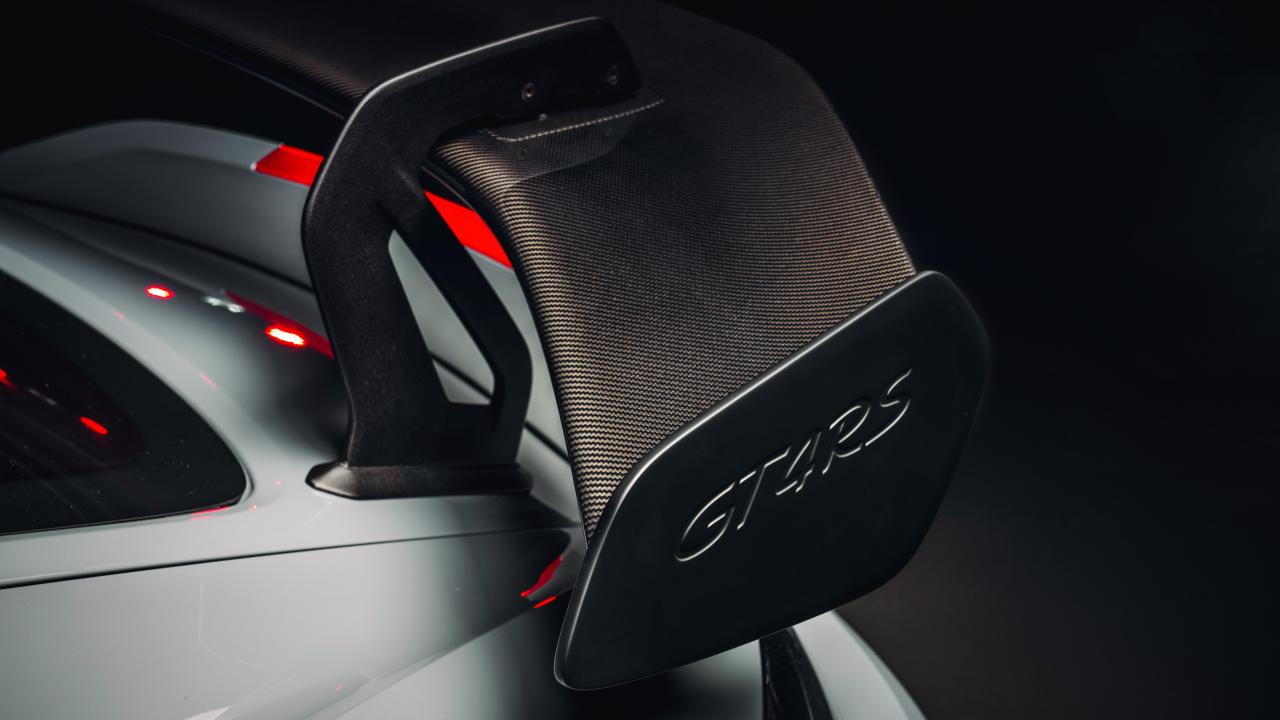
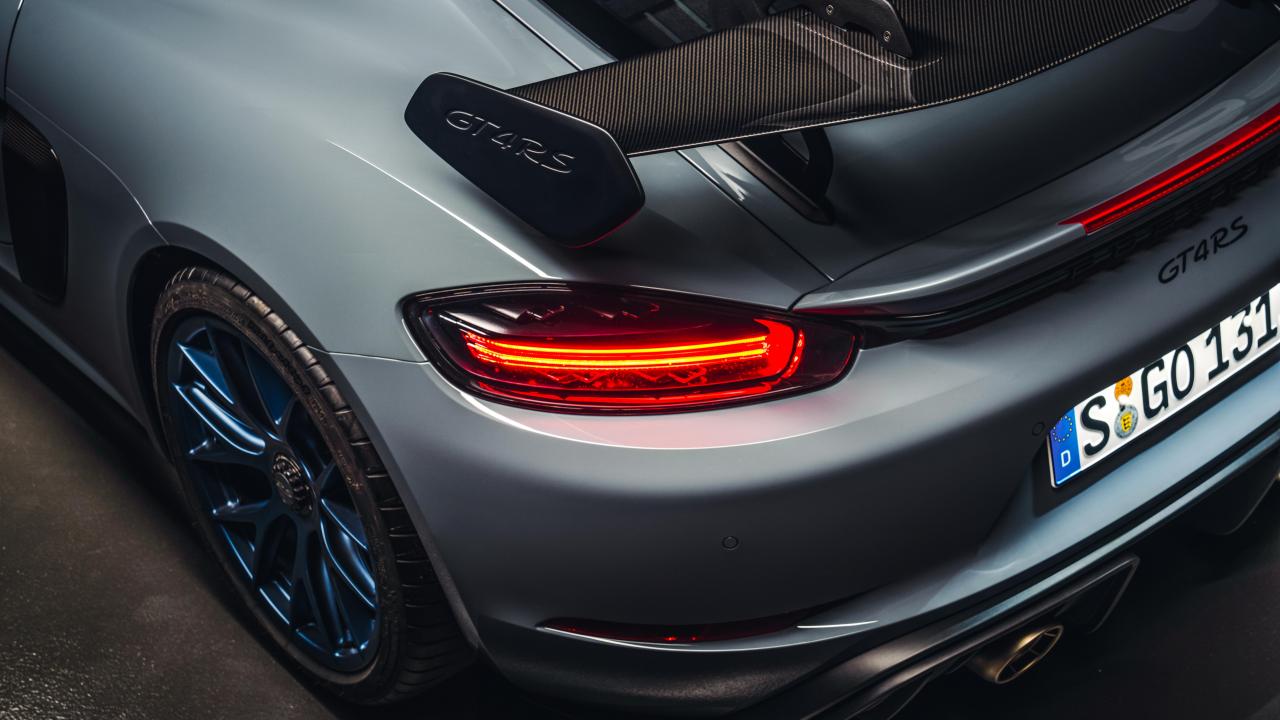
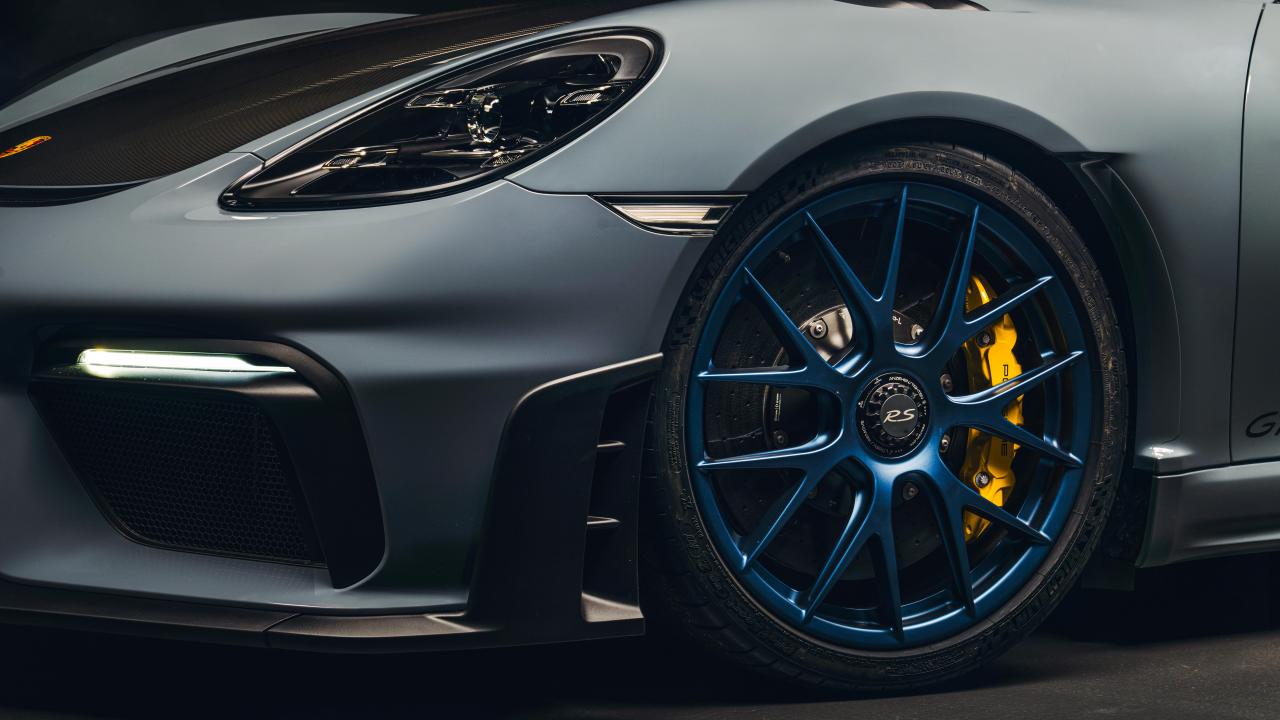
We are matching all the worldwide criteria for external noise, but in the interior, this is such an entertainer. It's like, Robbie Williams, let me entertain you. This is what this car is about.” Dodgy boy-band references to one side, you had us at ‘induction sound’.
Just one final question hangs heavy in the air. Starting from S$624,888 (before COE and options), the GT4 RS is S$100k cheaper than the GT3. It’s also 20kg lighter, only six secs slower around the ‘Ring, has an identical 0-100km/h time and has the same number of seats with a roll cage in the back. So what’s the fundamental difference that creates room for both in the GT range?
“The GT3 always has huge competition around it. Everybody's trying to match the GT3’s status, its value package and its performance on the track. So we are eager to give the GT3 everything we can to let it stay on pole position, like the double wishbone front axle, the rear-wheel steering. It has all these gizmos that makes the car really fast,” Preuninger explains.
“On the GT4 RS we didn't look too much into super aero and eking out the last 10th of a second on the track. We tried to find the perfect compromise between road and track driving, and I think we did because from an emotional point of view, it’s a completely different experience to a GT3.”
STORY Jack Rix
PHOTOS Mark Riccioni
